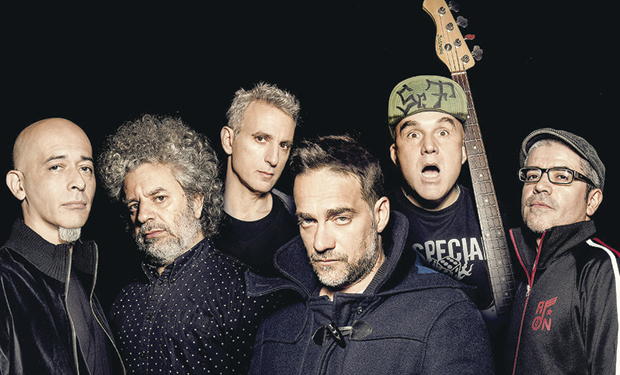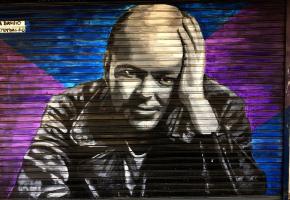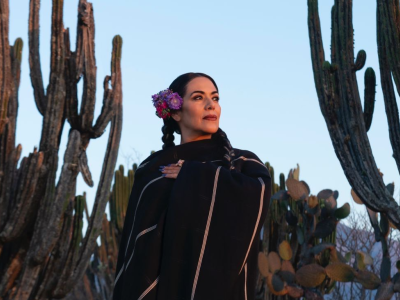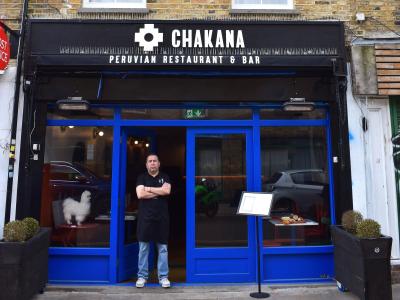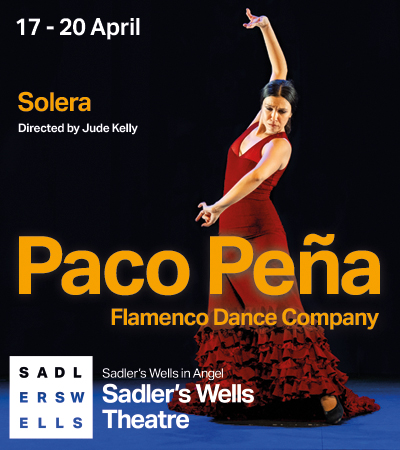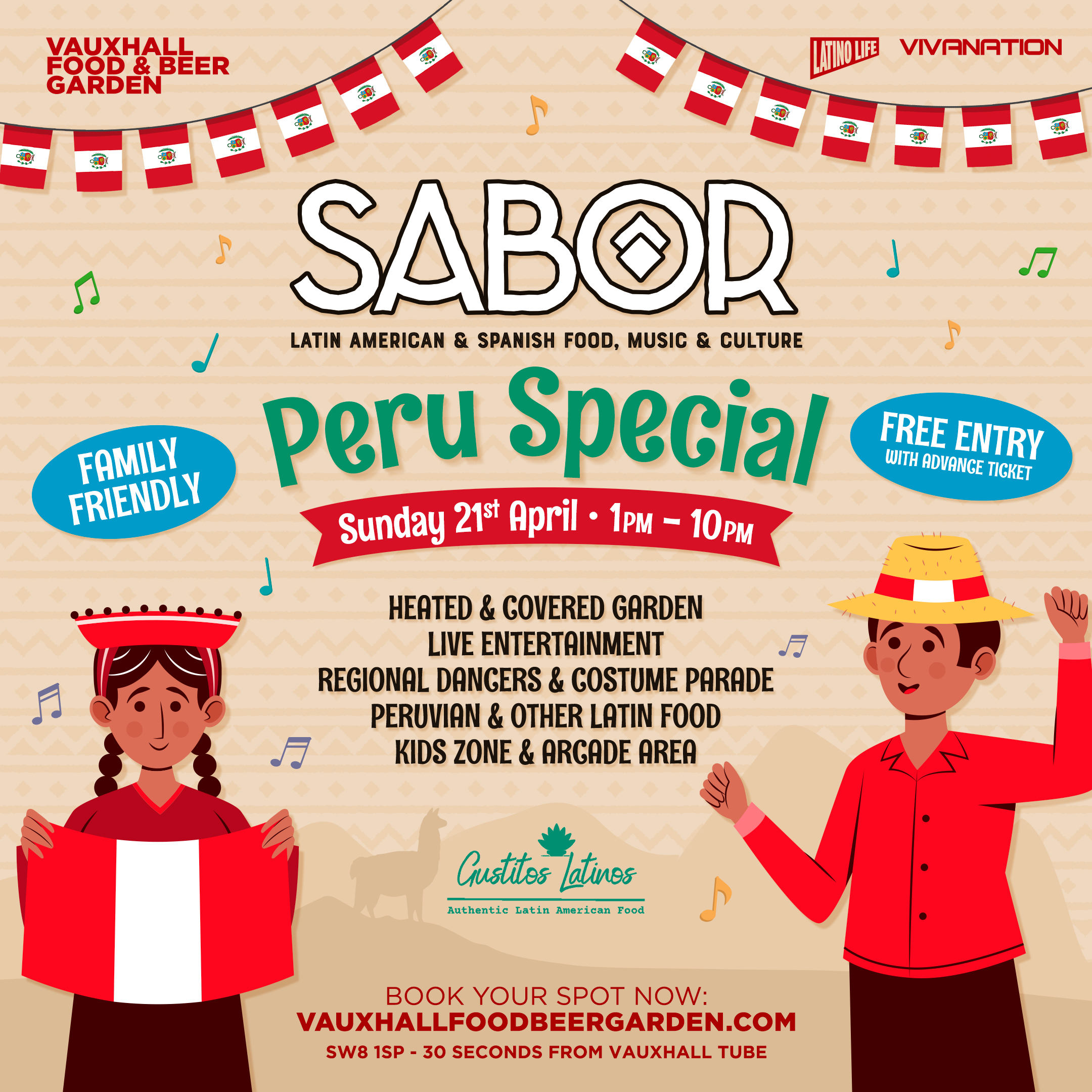It’s 10am on a warm, sunny Rioplatense day when Gabriel Fernández Capello, better known as Vicentico, stops his car to receive this call from London. Vicentico occupies an unusual place in the Latin music scene. On the one hand he’s seen as the ‘rebel’ vocalist of a band that’s earned a sacred place in the history of Latin American rock. On the other, he is also loved by a public more drawn to romantic melodies and boleros. In reality, Vicentico does not care much about that, we will learn: he likes all kinds of music, and plays them all too.
Nearby, in the residential district of Vicente López, Sergio Rotman has just woken up. The “third Cadillac”, as he likes to call himself (in reference to the central roles of Vicentico and Flavio Cianciarulo) drinks mate, the typical local tea, and reads “some stuff”.
In many ways, it seems that the crazy old Cadillacs have settled down; Sergio has paralel projects with his own wife, Puerto Rican singer Mimi Acevedo, whom he met during a Fabulosos Cadillacs tour in Latin America in the 1990s and Flavio lives by the beach.
Vicentico laughs: “The truth is, we’ve learned to like work during the day, and enjoy the morning and the sunshine. Now it wouln’t cross my mind making an album like in the old times, when we consumed a lots of things and lived by night.”
Los Fabulosos Cadillacs formed in the mid 1980s. Flavio and Vicentico (born on the same day and in the same hospital) met as teenagers when Flavio started to go out with Vicentico’s sister. They became friends and Flavio invited him to join a new band they were putting together with Mario Siperman (keyboard) and other lads. They had already recorded a demo and were after a sax player, so they invited Sergio to join.
Sergio: “There wasn’t much happening in the early 1980s in Buenos Aires. At the time there were Virus, Los Violadores, Sumo and that’s about it. Argentina was just coming out of a dictatorship, so we would easily bond with people dressing strangely like ourselves. It was in one of the Virus shows when I met Fernando Ricciardi, and since then played together in every band I’ve had.”
The original LFCs Vicentico (voice), Flavio (bass), Sergio (sax), Dani Lozano (trumpet), Siperman (keys) y Ricciardi (drums) are now joined by Vicentico’s own son Florián and Flavio’s son Astor, who doubles as either second drummer or second bass player.
Sergio: “Having Florián and Astor play with us is very natural, because both had already come to the shows and played with us so we didn’t even need to teach them anything. At this point we live a very quiet life too. All the crazy things, we did them already in the 1990s, so now we are fully dedicated to our playing and touring. Florián and Astor give a sense of perpetuity to LFC, as if they were to last for ever, and that’s really fun…”
This happens a lot with folk, I interrupt, like with the Carabajals or the Saravias families in Argentina…
Sergio: “Exacly, I agree. That’s more frequent in the folk tradition. In the rock movement it’s not so common. But with LFC I can see it happening.”
Vicentico agrees: “The kids know the songs perfectly, they can play better than anyone, they’re cool and are the kind of musicians we admire too, with blood in their veins, and they are very similar to us… so they fit perfectly our needs. When we discuss the lists of songs for a show, for instance, Florián and Astor suggest songs we haven’t played in ages which we wouldn’t normally play, and they make us think about them.”
In 2016, there was a lot of media furore around the fact that Sergio didn’t play with LFC, during the tour of their album ‘La Salvación de Solo y Juan,’ with speculation that he had been left out.
“Touring with LFC would have meant delaying all my other projects, which are not as known as LFC but are important to me. And because I have quite a strong personality, it was better not to be there than be grumpy,” Sergio laughs, and in it relaxes and reveals... “and it was made worse by the fact that was a great album, which I couldn’t be a part of, but it was a necessary album…”
Why necessary? I ask
“Because these two characters, Vicentico and Flavio, who are so different and so similar at the same time, they needed to make this album together. The rest of us are in their shadows or their mercy. I love that the band has two composers with their attitude and commitment to making music. They bring their ideas, and their songs have moved LFC to the extremes, say from the jazz of ‘La Marcha del Golazo Solitario’ [1999] to the powerful rock of ‘La Salvación de Solo y Juan’. I am very proud to be part of their whims and lunacies.
Vicentico adds: “It’s true that Sergio did not take much part but it wasn’t somegthing we did on purpose, like ‘let’s compose something only us’, we’d been thinking of this story for ages with Flavio and needed to do it….”
How was the process?
Vicentico: “It was a long process and a lot of fun. We met every day in the morning, first wrote the story, defined the argument, the tone, and then the lyrics started to appear, and also the music to go with them.”
Contrary to today’s albums which, if released at all in that format, are a collection of short fast tracks, ‘La salvación’ is a concept album based on the 1970s’ rock operas, that demands you to sit and listen. The Latin sound of LFC gave place to more powerful guitars, two drum kits or two bass.
While Flavio and Vicentico have written most of the songs, Sergio is the composer of some of the most important LFC songs, including ‘Siguiendo la luna’, ‘Ríos de lágrimas’, ‘Ciego de amor’, ‘Miami’, ‘Amnesia’, and ‘El fin del amor.’
He calls himself the George Harrison of LFC, “Obviously not in a musical sense, but because we have our John and Paul, and I’m in the middle with my own songs. I’m like George also in that I often bring new stuff. I’m the DJ who tells them ‘listen to this or that’, and they pay attention and appreciate it.”
LFC has changed its style throughout the years but always keep recognisable. How do you achieve that? I ask
Sergio: “I think we owe that to our predecessors. We grew up with bands like The Clash who helped us understand about live music. The Clash changed from album to album, incorporating and adapting styles. We started with ska and reggae as main rhythms but even before Bares y fondas (1986) [the band’s first album] we were already influenced by other styles and wanted to learn to play them. We learned them on the way, playing live on stage, and composing. The process was incredibly intense in the 1990s, and it hasn’t stopped. We’re, again, learning to make songs from a different place. In that sense, The Clash has been more than just inspiring, it was the model to follow.”
LFC rose to fame between 1987 and 1989 with hits such as ‘El genio del dub’, ‘Mi novia se cayó en un pozo ciego’, ‘Yo no me sentaría en tu mesa’, ‘Yo te avisé’, and ‘Número 2 en tu lista’. Despite their early success, with the Argentine economy in crisis, the band struggled to survive as musicians. Yet, their fans continued to follow them and hits such as El León (1992) and Vasos Vacíos (1993) and Rey Azucar (1995) made them huge in Argentina. By then Caribbean rhythms, congas, and percussion had take prominence over ska, and their new hits ‘Gallo rojo’, ‘Matador’, ‘V Centenario’, ‘Mal bicho’, ‘Padre nuestro’ catapulted them across Latin America.
Something unusual happened. Not only did LFC keep groing popular across Latin America, but they did so while going more and more experimental, mixing Latin rhyths with hardcore, tango, and a bit of jazz in Fabulosos Calavera (1997), and La Marcha del Golazo Solitario (1999).
But this hyper-prolific period took its toll, and after the live album Hola/Chau (2000) they stopped playing together. Despite the rumours and solo albums between 2001-2 and 2007, Vicentico, Flavio and Sergio always claimed to be good friends. In 2007 they recorded a song for the album Calamaro Querido and played Akustic Loco in an FM radio where Flavio hosted a programme. One year later the return was announced officially as ‘Yo te avisé’ (I told you so). Since then, they have combined live shows, tours, albums together with their solo careers, which perhaps explains the eclectic and ever-evolving life of the band.
Vicentico: “We all listen to a lot of music, of all types. So if someone suggests, ‘let’s go this way’ we have no fear to go one way or another. We listen to everything and we never cared much for preconceptions about what is ‘good’ music. To me, what’s most important is for the song to have a heart, something beating inside. The style and genre, and anything that surrounds the song, is less important. For a song to live long and become important, it has to have something, be alive and tell a truth. Later you can dress it, find a style or the form, maybe add some distortion.”
How are the rehearsals today in comparison with the first years?
Sergio: “Sporadic. With Flavio living in Mar del Plata we don’t rehearse often. So, we get together with a set of songs and we modify it depending on the show. After almost 32 years playing together there is a flow, a kind of telepathy, so our main concern is more what we’re eating for dinner than what we’re playing.”
La Salvación de Solo y Juan received a Latin Grammy award (best rock album) and La tormenta (best rock song). What do those prizes mean to you?
Vicentico: “I personally don’t feel prizes as an achievement, but also don’t want to be disrespectful to them and I also appreciate when somene awards one to us. Prizes in general have mostly to do with the music industry, not necesssarily with your music or with a colleague saying, ‘I really like this’. In the case of the Grammy, it was fun going and take part because we were all together, with our kids, and it was a good occasion for us to spend time together and enjoy.”


